
Gateway Systems Administrator with 51-200 employees
It's been helping us to quickly pinpoint specific application problems, especially related to memory and slow queries.
What is most valuable?
Viewing JVM performance and the business transactions for latency and SLA.
How has it helped my organization?
It helps us to quickly pinpoint specific application problems related to memory and slow queries.
What needs improvement?
Yes, the custom dashboard. Making custom dashboards is really tedious. I wish there was just a drag and drop to slap things together quickly.
For how long have I used the solution?
1 year
Buyer's Guide
Splunk AppDynamics
December 2025
Learn what your peers think about Splunk AppDynamics. Get advice and tips from experienced pros sharing their opinions. Updated: December 2025.
879,371 professionals have used our research since 2012.
What was my experience with deployment of the solution?
No. I've had some bugs where machines stop behaving correctly with the agents but a lot of it had to do with the fact that I had them joined under one product name and then I had changed the machine or put in a different one. A lot of these issues were probably self inflicted and not due to AppDynamics. Deployment has been pretty smooth.
What do I think about the stability of the solution?
None at all.
What do I think about the scalability of the solution?
For what I'm doing it's been perfectly scalable to what I need.
How are customer service and support?
Customer Service: Good. Initially with the sales engineer, we spoke about training but what ended up happened was that I needed to negotiate the price (which was fine) but what I missed was some of the hands on training. It's a complex product, and I could benefit from an online video, etc. because I didn't going through the formal training to learn the app. Some scenario driven walk thru's would be very helpful.Technical Support: It's been good. What I've needed to do is send them a whole pile of logs. It can be a pain digging them up but I understand why they need them to troubleshoot. You can't troubleshoot without them. I gather the logs, send them all on the ticket and I haven't had a problem with their response.
Which solution did I use previously and why did I switch?
We weren't previously using another APM solution. We were only using a very basic Java profiler beforehand.
How was the initial setup?
I was on my own, but it was fine. AppDynamics walked me through a few things because I had the free version installed on a different system and then we upgraded. They walked me through to make sure I had it set up correctly the first time. Deployment was easy.
What was our ROI?
With AppDynamics I'm really barely scratching surface with what it can do. I don't have any SLA metric configured or alerting. What I'm trying to do with AppDynamics is use it in such as way that it's a pulse on my app.
Which other solutions did I evaluate?
AppDynamics was the only product I evaluated in a production setting. All my previous APM use was in a development environment.
What other advice do I have?
AppDynamics does exactly what it says it can do. It's well readable and easy to navigate. Configuration and changing things around is easy enough.
Disclosure: PeerSpot contacted the reviewer to collect the review and to validate authenticity. The reviewer was referred by the vendor, but the review is not subject to editing or approval by the vendor.
Systems Engineer with 51-200 employees
We looked into New Relic and Hyperic but chose AppDynamics for their metrics which provides us with a complete picture
Valuable Features
The fact that we can track all steps from a transaction and find the relation with the OS. With the metrics AppDynamics provides us with, we have a complete picture to draw conclusions.
Improvements to My Organization
We have already found memory leaks in some systems. And also some SQL calls to the DB that cause issues.
Room for Improvement
We miss more information for tweaks at the OS level and resource usage. Also making the integration with AppDynamics easier would be a good improvement.
Use of Solution
7 months
Deployment Issues
No, we didn't encounter any issues with deployment.
Stability Issues
Sometimes the dashboard and some screens flick and run with information.
Scalability Issues
No, at the moment we have in all systems and we are not finding any trouble or bottle-necking.
Customer Service and Technical Support
Customer Service: Their response times are really good and they're knowledge about the product.Technical Support: Excellent!
Initial Setup
No, we always look for the simplest ways. We run the implementation without any issues.
Implementation Team
We implemented in-house.
Pricing, Setup Cost and Licensing
What I can say is that we didn't have any surprises with regards to cost. Everything was clear from the beginning.
Other Solutions Considered
We looked into several different products but never integrated any of them. We mainly looked at Hyperic and New Relic.
Other Advice
Sizing of the product in term of the server to run it or architecture is the secret to success.
Disclosure: PeerSpot contacted the reviewer to collect the review and to validate authenticity. The reviewer was referred by the vendor, but the review is not subject to editing or approval by the vendor.
ok, nice to know about it !! Hope you have a good experience with Appdynamics and would also recommend it to others !!
Buyer's Guide
Splunk AppDynamics
December 2025
Learn what your peers think about Splunk AppDynamics. Get advice and tips from experienced pros sharing their opinions. Updated: December 2025.
879,371 professionals have used our research since 2012.
Application Engineer at a manufacturing company with 1,001-5,000 employees
Makes it very clear when/where the issue is occurring. Allows us to quickly find and solve the root of the problem.
What is most valuable?
By far the most valuable/important feature for us is the ability to correlate the performance of individual business transactions across multiple nodes and applications in our environment.
How has it helped my organization?
Usually when a performance issue occurs there is a lot of finger pointing and spin that happens as a result. AppDynamics makes it very clear when/where the issue is occurring and it makes us quickly find and solve the root of the problem. It has also helped us foster more trust in our teams and the applications those teams build because everyone is being monitored by the same application.
What needs improvement?
The alerts and pro-active monitoring need work. I have found it very cumbersome to setup meaningful rules. This has led us to use the tool as a reactive tool instead of a proactive tool. Also, it would be great if this could be an iPad app (or at least not flash) so we could have easier access when working remotely. Lastly, this app needs better support with LDAP authentication (see below for more details regarding this topic).
For how long have I used the solution?
We have been using this solution for a little over 6 months in total.
What was my experience with deployment of the solution?
Yes, we still don't have AppDynamics properly working with LDAP. The actual LDAP integration was not hard. However, we have a large organization and something about pulling up our LDAP user list causes the UI to completely freeze. This has essentially made it to where we cannot provide everyone we want access without a lot of hassle.
What do I think about the stability of the solution?
Nothing conclusive, however there have been times where we don't see full business transactions. I believe this is because of our use of MongoDB which doesn't seem to be completely supported for which we configured custom exits for.
What do I think about the scalability of the solution?
Not yet.
Which solution did I use previously and why did I switch?
No, another part of our company used New Relic though. We could not use that solution because it is cloud based and the specific data our group interacts with cannot be externally hosted.
How was the initial setup?
I believe our setup was fairly straightforward, however it was difficult to get the MongoDB interactions to work correctly (still think we have some issues even now with this).
What was our ROI?
IT is fairly hard to quantify exactly, but I believe the ROI was very high. I believe this product saved us countless hours/time and really has allowed us to focus on building/maintaining software instead of digging through logs while doing more rudimentary application monitoring.
Which other solutions did I evaluate?
Yes, as stated above we considered New Relic but could not use it because it was a hosted solution.
What other advice do I have?
I would say the best thing people could do is to monitor as much as possible. By this I mean don't just monitor the app your team/group is building, but also everything it interacts with. I found the most use out of this tool when we could see the whole picture not just our small slice.
Disclosure: PeerSpot contacted the reviewer to collect the review and to validate authenticity. The reviewer was referred by the vendor, but the review is not subject to editing or approval by the vendor.
Senior Software Engineer with 51-200 employees
AppDynamics provides a lot of data. It has allowed us to find critical memory flaws in our application.
What is most valuable?
JVM memory monitoring, hardware monitoring, response time monitoring and proactive alerting.
How has it helped my organization?
AppDynamics has allowed us to find critical memory flaws in our application. We were able to find a root cause to a JVM permgen issue by using AppDynamics’ memory monitoring tools.
What needs improvement?
Remove all Flash from the product. Also make drilling down in the response time call stacks easier.
For how long have I used the solution?
1 year
What was my experience with deployment of the solution?
None.
How are customer service and technical support?
Customer Service: 8 out of 10. They have answered everything I have asked.Technical Support: 7 out of 10. Sometimes not as specific as I would like but overall I am happy with them.
Which solution did I use previously and why did I switch?
Our previous solution only allowed us to see hardware and response time latency, we were unable to drill into call stacks to find the root cause.
How was the initial setup?
Pretty straight forward. Followed the setup guide and was in business within an hour or so.
What about the implementation team?
In-house
What's my experience with pricing, setup cost, and licensing?
Setup cost was about 2-3 days of a developers time to install / configure. Day to day cost is we have an extra server that needs to be on to run AppDynamics.
What other advice do I have?
AppDynamics has a lot of information it can give you. Be sure to take the time and understand all the data. There may be critical information that can help improve your application performance.
Disclosure: PeerSpot contacted the reviewer to collect the review and to validate authenticity. The reviewer was referred by the vendor, but the review is not subject to editing or approval by the vendor.
Yes it avoids alert storms. There are cool downs etc.... Yes AppDynamics is doing their best to go full HTML5 in their newest version.
User Experience Solution Director at a manufacturing company with 1,001-5,000 employees
We evaluated dynaTrace and New Relic but chose AppDynamics for features such as self discovery and on premise usage
What is most valuable?
I think the ability to quickly correlate and introspect into what's going on inside a Java container is the most valuable feature for us. We haven't fully leveraged it yet for monitoring and altering which was one of the main reason we wanted AppDynamics. These features are hooked up but we haven't seen a lot of action in production yet. We currently use it more for the pre-production performance troubleshooting and debugging. So far its been the majority of our usage.
How has it helped my organization?
In production we haven't had any serious issues which caused us to lean on it heavily but in pre-production we had a few big performance degradation problems. AppDynamics was crucial for us pinpointing root cause and fixing it. We probably wouldn't have been able to go live as swiftly as we did without AppDynamics.
What needs improvement?
I think the only feedback from my team has been that it's not an HTML based UI right now, so it's limited on mobile devices. An HTML 4 or 5 based interface would be great.
For how long have I used the solution?
Part of why we chose AppDynamics was because we felt that they were above all other products. We have been using it in trial mode or pre-production mode for quite a while - almost a year now, and we've been using it heavily since January. We've been using it in production since the end of April.
What was my experience with deployment of the solution?
Deployment was fairly easy. Our team learned how to use AppDynamics fairly quick. We're now proficient in it.
What do I think about the stability of the solution?
We haven't seen AppDynamics crash or have any problems so far.
What do I think about the scalability of the solution?
We're currently running relatively low numbers, under 40 DBMS in production and pre-production and we haven't really scaled yet. So far AppDynamics has been great with what we have.
How are customer service and technical support?
Customer Service: Customer service has been good. We've actually been less capable of keeping up with them then they have been with us. They've been great about reaching out and following up.Technical Support: Technical support has been just as great as their customer service. We've been able to get what we need when we need it.
Which solution did I use previously and why did I switch?
This was our departments first jump in with an APM solution. Some of us have some experience with New Relic (from when we were in other departments which have 100's or 1000's of licenses). We started from scratch with an RFP and met everybody- we met many vendors and finally evaluated AppDynamics, dynaTrace and New Relic.
How was the initial setup?
We didn't have any issues with the initial setup. The first time when we did our POC, AppDynamics came in and sat with us for a day and set it all up. This gave us a lot of experience with it. They came back later to help us set up the final version but at that point we were already trained.
What was our ROI?
We haven't quantitatively measured it yet. Qualitatively, for the helpful times that we've used it, we like it.
What's my experience with pricing, setup cost, and licensing?
Day to day costs- vm's we pay for to run it and license costs. A little bit of administrative overhead but once it gets set up it's good to go.
What other advice do I have?
The model that we used to do the POC and prototype to test it out first helped to get us familiar with the tool, familiar with it and trained on it. AppDynamics suggested it and said they could come in and help - we accepted!
Disclosure: PeerSpot contacted the reviewer to collect the review and to validate authenticity. The reviewer was referred by the vendor, but the review is not subject to editing or approval by the vendor.
it_user516924Production Operations Systems Admininistrator III at a computer software company with 1,001-5,000 employees
Vendor
There should be very little left in terms of non-HTML 5 interface when viewing the controller.
Application Support Engineer with 51-200 employees
Useful metrics and amazing snapshots of transactions are two reason why we chose AppDynamics over CA and Compuware.
How has it helped my organization?
We have been able to proactively correct issues from newly launched applications without even receiving complaints from the end users, and the amazement of users when you notify them personally that an error they never reported has been corrected is priceless.
What is most valuable?
The detailed metrics that are collected about the JVM and the transaction snapshots, those have been most valuable to us to correct complex bugs.
What needs improvement?
The granularity of historic data could be improved.
For how long have I used the solution?
One to three years.
What do I think about the stability of the solution?
The Java agent never was the cause of any application crash since we've used them.
What do I think about the scalability of the solution?
So far we have never reached the limits of AppDynamics Pro, it scales at our pace.
How are customer service and technical support?
Customer Service: AppDynamics is one of those rare companies that put the customer experience first. Once you become a customer you are appointed a technical account manager that helps you get the most out of your investment. I have a conference call with mine every other week and it really improves our understanding and use of the solution.Technical Support: Very good, we never had any major issue and we have always been helped promptly.
Which solution did I use previously and why did I switch?
We did not use a comparable solution before, we choose AppDynamics when we initially compared the different Application Performance Management solutions.
How was the initial setup?
Setting up AppDynamics is a breeze. We never encountered any installation issue nor with the Java agents, machine agents or the controller. We always installed the components ourselves without any help other than the documentation.
What about the implementation team?
As mentioned before we implemented it ourselves without any external help.
What was our ROI?
Our ROI is very good, the areas that profited the most were productivity, customer experience, software quality and bug fixing time.
Which other solutions did I evaluate?
AppDynamics was chosen over several competitors which we evaluated: CA Wiley and Compuware dynaTrace.
What other advice do I have?
I rate the AppDynamics Pro usability, stability and customer experience as the best. This solution is very advanced and they keep on improving the features that make it great. Once you use AppDynamics it feels like you were standing in the dark before. Implementing it is a breeze even if you never used it before, and out of the box it gives you so much useful information that you only need to fine-tune it. I never heard of any other product that is up and running this fast.
Disclosure: PeerSpot contacted the reviewer to collect the review and to validate authenticity. The reviewer was referred by the vendor, but the review is not subject to editing or approval by the vendor.
I would say the clear title of AppDynamcs vs. other major competitors would be a clear indication that this is a gamed review. It makes it is searchable and easily shared in multiple channels. There are other such reviews that have a very similar structure. If this is a typical review I would expect to see very similar posts from other competitors in the space. I just don't see that. Do you see posts with titles like "We picked New Relic over AppDymamics, CA, and Compuware"? or We love CA APM better than AppDynamics and New Relic. No. Only in cases of AppD do you see this. I would discount most of these types of reviews as they are not an accurate portrayal.
Senior Systems Engineer at a manufacturing company with 1,001-5,000 employees
Enables us to track down slow transactions quickly.
Valuable Features
Transactional awareness. The team really enjoyed being able to track a transaction from start to finish. Not really a feature but I find the interface easy to use.
Improvements to My Organization
Gave us a tool to track down slow transactions quickly.
Room for Improvement
LDAP integration.
Use of Solution
1 year
Deployment Issues
Just LDAP integration.
Stability Issues
We haven't seen any stability issues.
Scalability Issues
We haven't seen any scalability issues.
Customer Service and Technical Support
Customer Service: 8 out of 10 - I felt that the AppDynamics team was very engaged and more than willing to help but we never really got to a reasonable solution within the timeframe I had.Technical Support: 7 out of 10 - same reasoning as above.
Initial Setup
AppDynamics setup was straightforward.
Implementation Team
In-house
Disclosure: PeerSpot contacted the reviewer to collect the review and to validate authenticity. The reviewer was referred by the vendor, but the review is not subject to editing or approval by the vendor.
If you use openldap you may not even run into any issues. We called on both in house resources and the AppDynamics team to enable AD login. The AppDynamics support team was very eager to help us with the LDAP issues we were faced with. I expect that they will get you dialed in (if you even need it).
Sr Software Developer with 501-1,000 employees
Since it emails us alerts when certain things happen, we can start working on a problem before our customer notices.
Valuable Features:
I like that I can see the stack trace when problems are detected. This points me to the area in the code that needs to be fixed.
Improvements to My Organization:
We have AppDynamics set up to email us alerts when certain things happen. We can start working on a problem before our customer notices.
Room for Improvement:
I did not find it easy to understand at first. It just looked like this sea of information, and I couldn’t see the logical breakdown of things, and the names for things didn’t immediately help me figure out what they were really for – what it could help me see and do.
Use of Solution:
About a year.
Stability Issues:
None that I am aware of.
ROI:
I don’t know what we spent on it, but whatever we spent, it was a good investment. This tool is helping us get our application free of bugs and performance issues.
Other Advice:
Learn as much as you can about it. It can do more than you think. Make use of the enthusiasm of the AppDynamics employees to help you learn.
Disclosure: PeerSpot contacted the reviewer to collect the review and to validate authenticity. The reviewer was referred by the vendor, but the review is not subject to editing or approval by the vendor.
Since you were not involved in implementation, have you found it interesting starting as a new user of AppDynamics? or did you face any issues in understanding it?
Buyer's Guide
Download our free Splunk AppDynamics Report and get advice and tips from experienced pros
sharing their opinions.
Updated: December 2025
Product Categories
Application Performance Monitoring (APM) and Observability IT Infrastructure Monitoring IT Operations Analytics Mobile APM Container MonitoringPopular Comparisons
Dynatrace
Splunk Enterprise Security
New Relic
Azure Monitor
Elastic Observability
PRTG Network Monitor
Palantir Foundry
Splunk Observability Cloud
Nagios XI
Amazon OpenSearch Service
Buyer's Guide
Download our free Splunk AppDynamics Report and get advice and tips from experienced pros
sharing their opinions.
Quick Links
Learn More: Questions:
- APM tools for a Managed Service Provider - Dynatrace vs. AppDynamics vs. Aternity vs. Ruxit
- I would like to compare Dynatrace and AppDynamics. On what basis should I decide?
- What Is The Biggest Difference Between AppDynamics and Dynatrace?
- What are the pros/cons of AppDynamics, New Relic & CA Technologies?
- HP TransactionVision vs. AppDynamics? Pros and Cons?
- Why use active and passive monitoring for a web site?
- What are the advantages of AppDynamics vs Dynatrace?
- Any advice about APM solutions?
- What Application Performance Management (APM) certifications do exist?
- What are the pros and cons of AppDynamics?
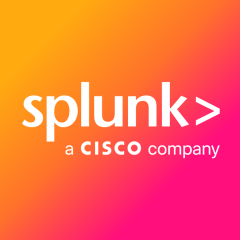

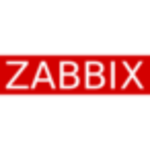

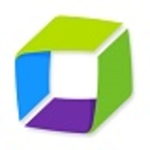

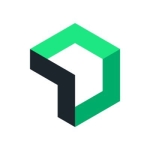







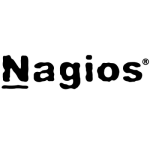
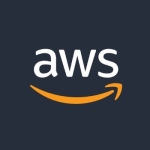

Nice article!! AppDynamics has been used a lot these days in monitoring JVM performance and still there are lot of improvements needed like custom dashboard.